Analyzing a critical engine flaw in the 4b11 by TTP
#1
Analyzing a critical engine flaw in the 4b11 by TTP

Well for over a year now we have been documenting failures in the 4b11 engine. In our research we have found most all of them failing for the same reason each time. In analyzing the components after the failure of these engines we have come to a back up our initial interpretation with case after case of symptoms, all of which were following the same path.

We are not certain if there is any rhyme or reason that these failures are happening to a given set of cars build date span, if there has been manufacturing or quality control changes along the way however the facts will remain that a sizable portion of the Evo X community is at risk of a critical flaw in the 4b11 engine building process at Mitsubishi.
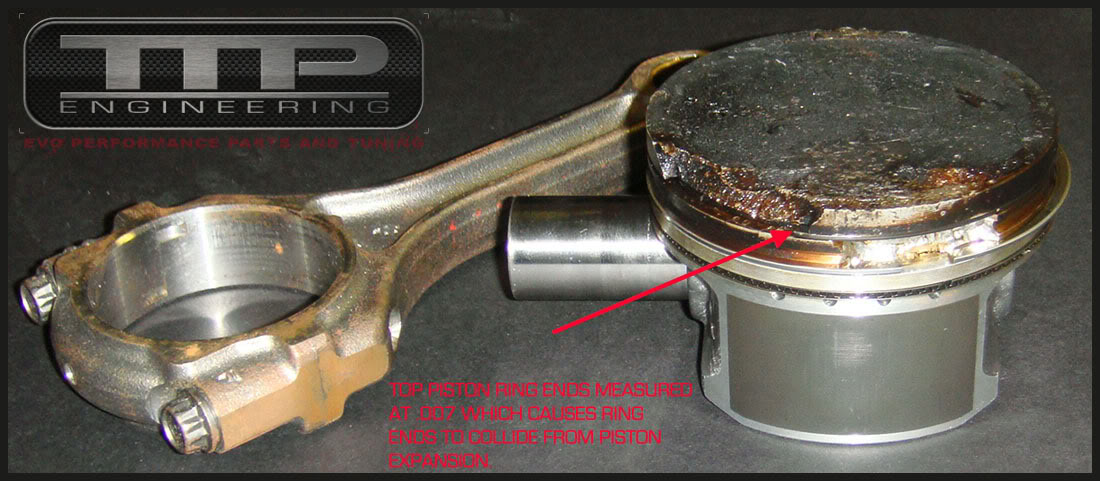
What we have found time and time again is that the top compression ring on these engines at the very least have ring end gaps WAY TOO SMALL for a turbocharged performance vehicle. In removing the rings and measuring the gaps in the cylinders, what we found was a shocking .007" gaps.
Most piston ring manufacturers recommend a minimum end gap of .004 inches times the bore diameter for the top piston compression ring. So for a 4 inch bore, the standard end gap would be .016 inches.
86mm stock bore = 3.38582677"
.013-.014 recommended ring gap
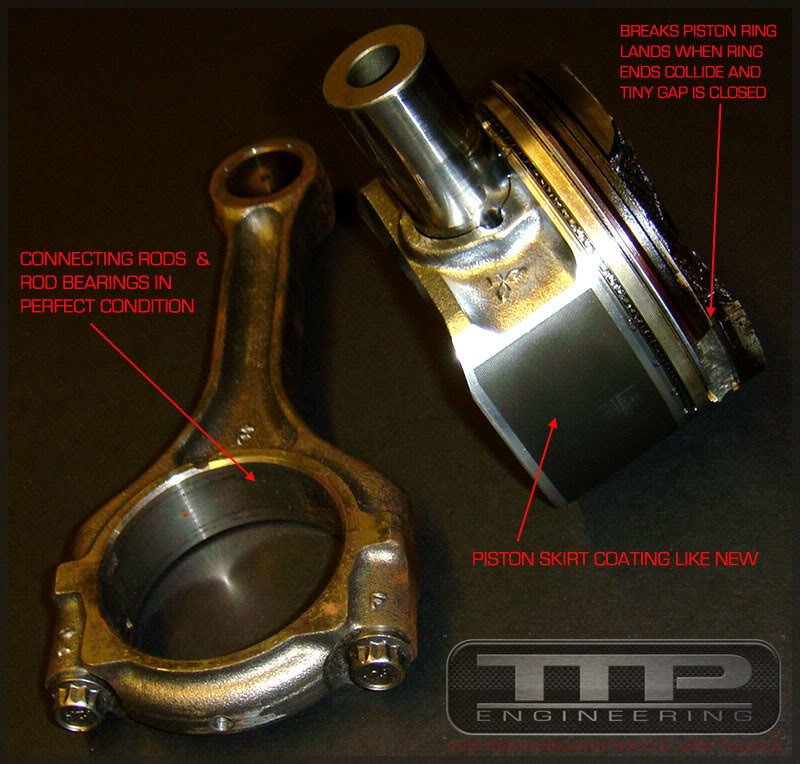
For a modified street performance engine that generates more horsepower and heat, the end gap should be opened up a bit to compensate for increased thermal expansion. The recommendation would be a minimum top compression piston ring end gap of.0045 to .005 inches times the bore diameter. For a 4 inch bore, the ring end gap on the top ring should be increased to .018 to .020 inches.
86mm stock bore = 3.38582677"
.017 recommended ring gap for modified street performance
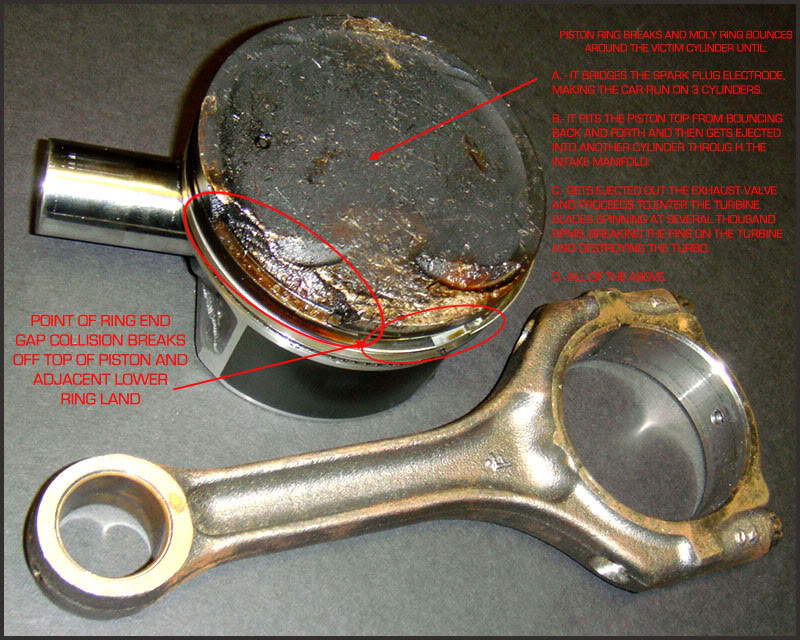
For a nitrous or turbo racing engine, the top ring end gap should be opened up to as much as .006 or .007 inches times the bore diameter. Now we're looking at a 2nd ring end gap of .024 to .028 inches in an engine with 4 inch bores.
86mm stock bore = 3.38582677"
.023-.024 recommended ring gap
NOTE: These recommendations are rules of thumb only. Always follow the end gap specifications recommended by the piston ring supplier or engine manufacturer.
Basically, Mitsubishi has failed horribly at correctly setting up proper ring end gaps for many of the Evo X 4b11 engines. What this means is there is no room for ring and piston expansion. It does not take much heat and boost to have the piston ring ends in cylinder #4 to expand and touch, until one of the ends breaks off and cracks off a piece of the piston top and ring land. From the photo's below you will see that where the ring ends collide, one ring side breaks the uppermost deck of the piston and the other end of the ring breaks the lower land.
From the piston chunk usually disintegrates, however the heavy duty piston ring piece that just broke off is very strong and will not just melt away. It will batter the piston, spark plug, valves and head as it bounces back and forth. In many cases gets ejected into the intake manifold and sucked back into another cylinder to do more damage. If that was not enough, once it finally gets sucked out of the exhaust valve it will most certainly contact and destroy the turbine blades in the turbocharger, adding insult to injury and racking up an even higher repair bill.


Feel free to take a look at some of the pics we have documented along the way from information we have collected and documented over the last year or two of seeing the same occurance in many Evo X's across the country.
MORE PICS WILL BE ADDED AS OTHERS COME FORWARD. THEY WILL BE ADDED TO THIS POST.
If Mitsubishi would like to discuss this with us, our contact information is in our signature.



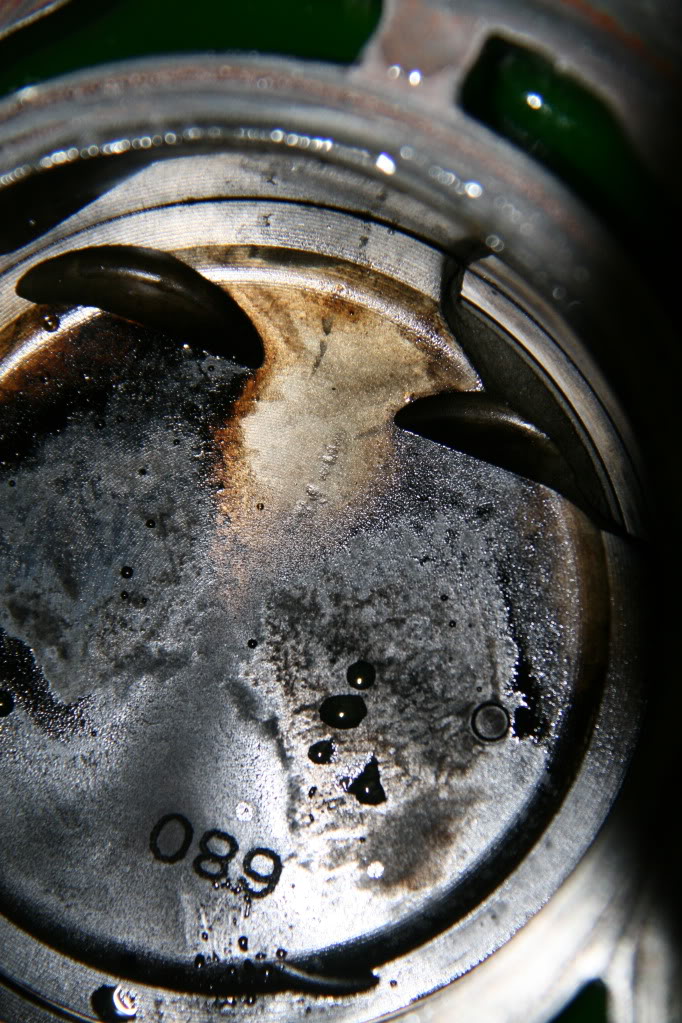
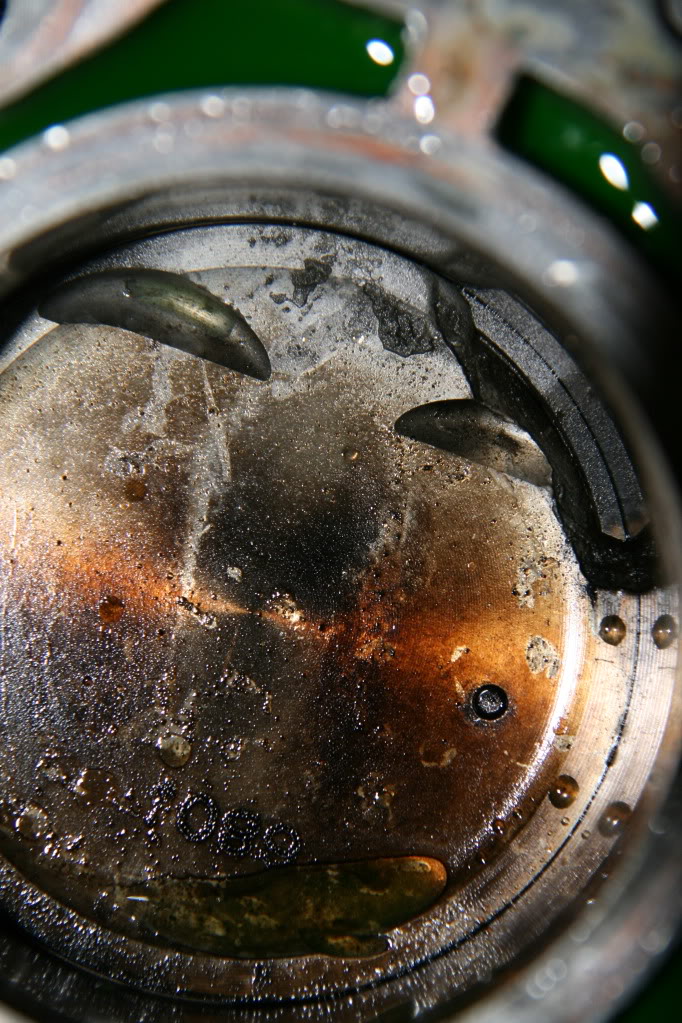
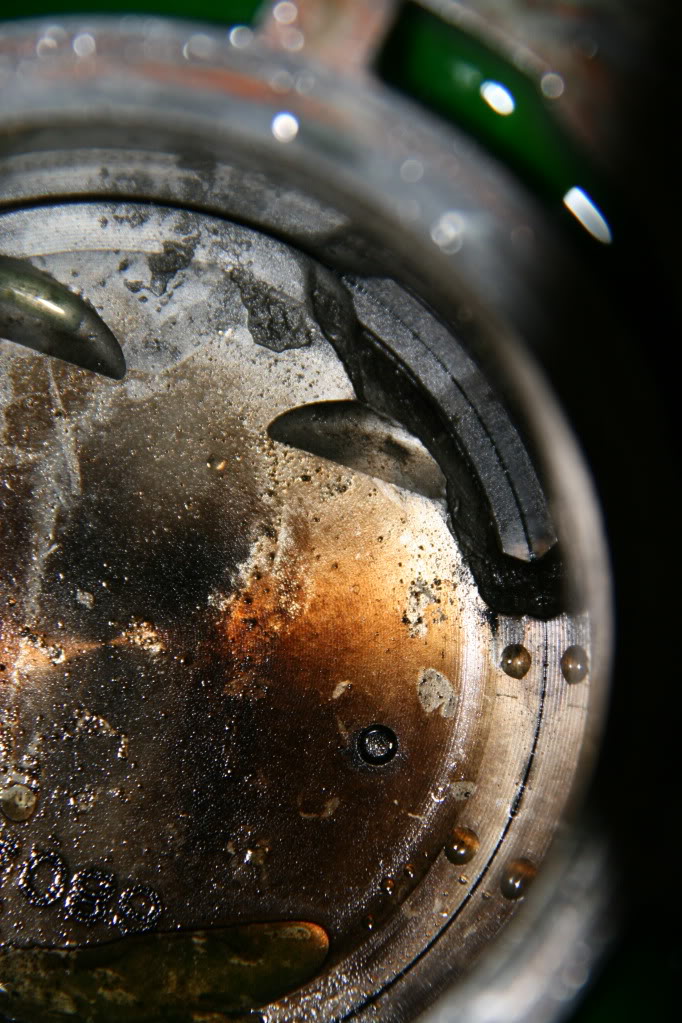
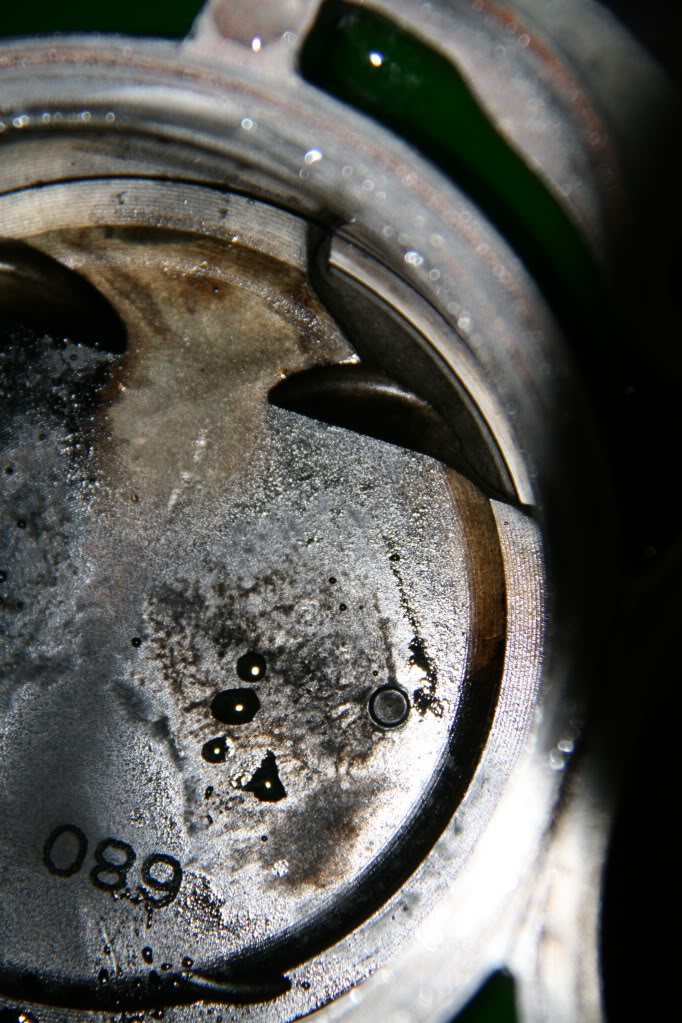
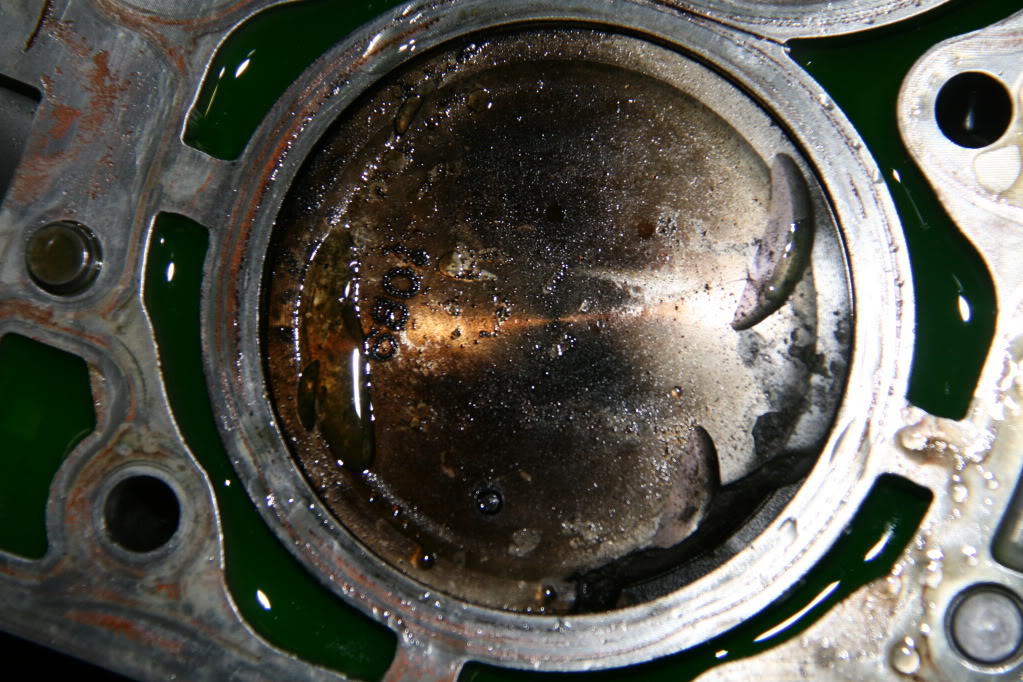
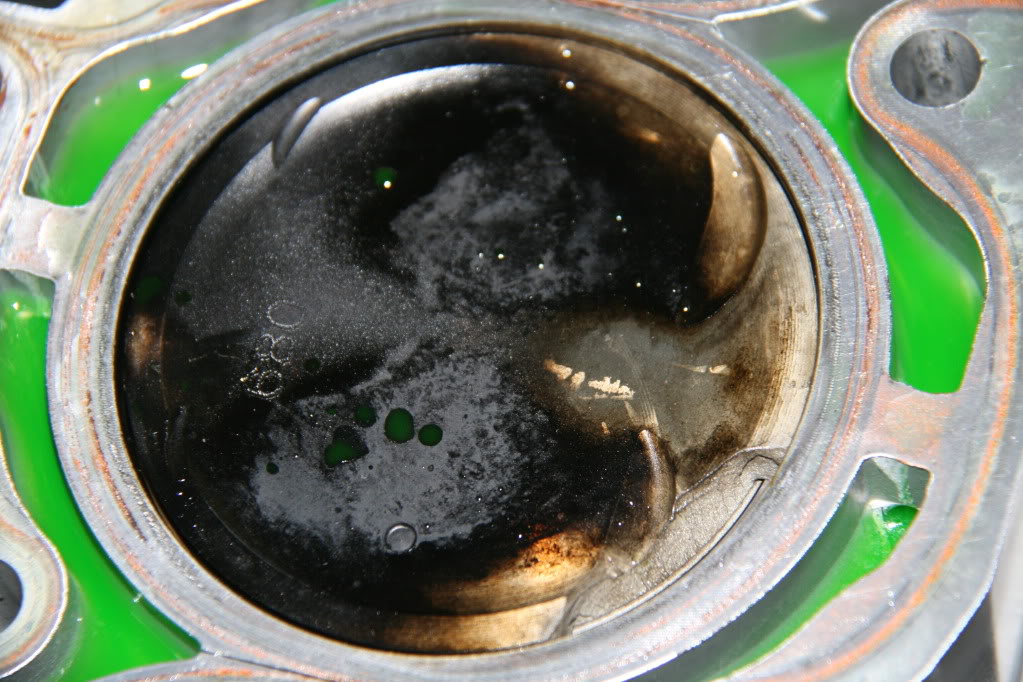


Last edited by TTP Engineering; Mar 30, 2010 at 09:00 PM.
#2
Evolved Member
Join Date: Jul 2008
Location: Calgary, Alberta, Canada
Posts: 1,264
Likes: 0
Received 1 Like
on
1 Post
Mahle makes the pistons so it's surprising that they would engineer a design and not consider this issue. Something people aren't considering is the high compression ratio these cars are running 9.0:1 compared to the typical 8.0 - 8.5 max on a non-DI turbocharged gasoline engine. IMO it's more to do with the high compression design of the pistons not being as tolerant to extreme tuning. Not a critical flaw in the engine, more of a critical stumbling block for tuners.
#3
Mahle makes the pistons so it's surprising that they would engineer a design and not consider this issue. Something people aren't considering is the high compression ratio these cars are running 9.0:1 compared to the typical 8.0 - 8.5 max on a non-DI turbocharged gasoline engine. IMO it's more to do with the high compression design of the pistons not being as tolerant to extreme tuning. Not a critical flaw in the engine, more of a critical stumbling block for tuners.
It is an assembly issue at Mitsubishi when building the engine.
Since we run 51psi on 9.0:1 pistons on our own daily driver, please don't come in here with ridiculous claims of 9.0:1 compression being high and that it is a tuning issue, which it is not.
If you have been paying attention, one of the largest threads on this issue is based on username "junction" who has experienced this with his AMS Performance tuned Evo X.
#4
Evolving Member
Join Date: Jun 2007
Location: New Zealand
Posts: 109
Likes: 0
Received 0 Likes
on
0 Posts
Is this a common occurance with the later model X's? Mine is a 07 JDM (within the first 500 made) and I have been running 27-28psi for over a year now. I guess the only way to check is to pull it apart
#5
The 2008's are still a new car so without another year or two, its going to be a while before we see whats going on with 2009 and 2010 engines.
#6
Evolved Member
iTrader: (14)
Join Date: Aug 2007
Location: M104
Posts: 815
Likes: 0
Received 0 Likes
on
0 Posts
Interesting documentation. It's worth noting (again) that maybe there is a defect in ring gaps but only in cars produced during a certain span of time. I thought there was a 4B11 failure thread around here... maybe that would help find a pattern.
#7
Evolved Member
Join Date: Jul 2008
Location: Calgary, Alberta, Canada
Posts: 1,264
Likes: 0
Received 1 Like
on
1 Post
It has nothing to do with pistons. There is nothing wrong with the pistons.
It is an assembly issue at Mitsubishi when building the engine.
Since we run 51psi on 9.0:1 pistons on our own daily driver, please don't come in here with ridiculous claims of 9.0:1 compression being high and that it is a tuning issue, which it is not.
If you have been paying attention, one of the largest threads on this issue is based on username "junction" who has experienced this with his AMS Performance tuned Evo X.
It is an assembly issue at Mitsubishi when building the engine.
Since we run 51psi on 9.0:1 pistons on our own daily driver, please don't come in here with ridiculous claims of 9.0:1 compression being high and that it is a tuning issue, which it is not.
If you have been paying attention, one of the largest threads on this issue is based on username "junction" who has experienced this with his AMS Performance tuned Evo X.
Trending Topics
#10
Evolved Member
iTrader: (3)
Since the common symptom is a bridged plug gap from a piece of ring hitting it then if you are not noticing an odd idle, then I would not bother investigating.
The 2008's are still a new car so without another year or two, its going to be a while before we see whats going on with 2009 and 2010 engines.
The 2008's are still a new car so without another year or two, its going to be a while before we see whats going on with 2009 and 2010 engines.
#14
Evolved Member
iTrader: (3)
Join Date: Sep 2005
Location: Indianapolis, IN
Posts: 875
Likes: 0
Received 0 Likes
on
0 Posts
There are other machining and parts issues other than this ring gap **** also. Have you guys seen pistons do this on 100% stock power level cars?
A tight gap like that might be perfectly fine for what they intended the car to do, however, they should know what people are going to do with these cars. Fact is...that tight gap makes more power.
I put a lot of heat in my motor and didn't experience this piston issue. I can only imagine how much heat with big boost and all the nitrous I ran. I'm going to take my good cylinders apart this weekend and measure ring gap and piston:wall so I can contribute to this thread instead of talking rubbish
A tight gap like that might be perfectly fine for what they intended the car to do, however, they should know what people are going to do with these cars. Fact is...that tight gap makes more power.
I put a lot of heat in my motor and didn't experience this piston issue. I can only imagine how much heat with big boost and all the nitrous I ran. I'm going to take my good cylinders apart this weekend and measure ring gap and piston:wall so I can contribute to this thread instead of talking rubbish

#15
Registered User
iTrader: (5)
Looks like the pistons all broke on the valve indention. Is it due to coincidence because the ring ends just so happened to be in that area? Next question is: what is the "safe" hp level? Or, in other words, at what hp levels did we get these failures? Want me to go run 93 octane again just to be safe.

